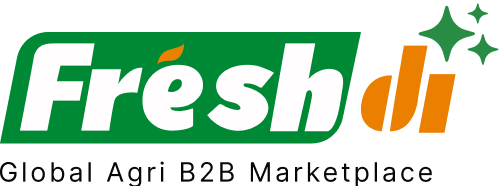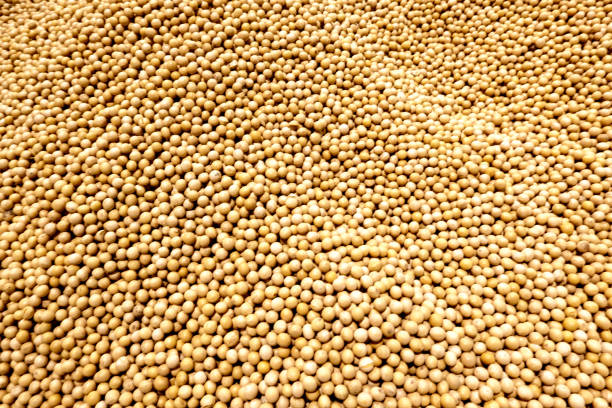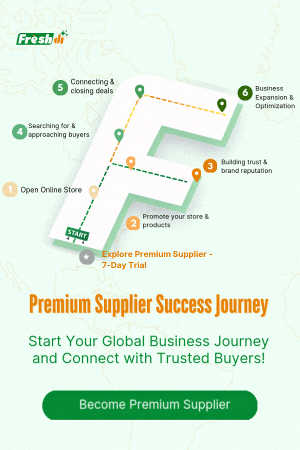Introduction – Current State of Play: The Soybean Sector in Poland
The Soybean market in Poland is at a turning point. In 2025, the sector is facing rapid shifts caused by a complex mix of geopolitical changes, trade realignments, and evolving domestic policies. The country is responding to a tightening global supply chain and fluctuations in demand from the animal feed and biofuel sectors.
A recent surge in imports from Ukraine, a neighboring agricultural powerhouse, has disrupted traditional sourcing channels. Meanwhile, Poland is pushing harder than ever for protein independence by incentivizing local soybean and legume production. Add to this the European Union’s broader strategy to diversify its agri-imports—especially with Brazil stepping up its game—and it’s clear that businesses operating in this space need to stay alert and agile.
With all these moving pieces, knowing who the top soybean suppliers in Poland are and how they fit into this volatile puzzle is more important than ever. Whether you’re sourcing for feed, oil, or meal, this article will guide you through the latest developments and the verified suppliers to consider in 2025.
Deep Dive – Market Movers: Recent Developments and Consequences
Let’s break down the big events shaping Poland’s soybean scene right now.
1. Shifting Import Patterns
In 2023, Poland’s soybean oil import value dropped from $311 million to $233 million. However, don’t let that fool you—the actual import volume increased by 6.3%, hitting 242,000 tons. So what’s going on?
Ukraine stepped up big time, now supplying around 90% of Poland’s soybean oil imports. This shift is likely to continue in 2025, as Ukrainian producers express readiness to further support Polish demand, possibly reducing dependency on U.S. imports in the long run.
Source: indexbox.io
2. Domestic Production Push
Poland is trying to reduce its reliance on imported protein sources. With €200-per-hectare subsidies on offer, the government is strongly encouraging farmers to cultivate homegrown protein crops like legumes and rapeseed meal. The goal? Replace 20–30% of imported soybean meal used in animal feed.
This strategy is rooted in both economic and quality concerns, especially with the recent influx of cheap Ukrainian grain impacting feed quality standards.
Source: allaboutfeed.net
3. EU Market Trends: Brazil on the Rise
Zooming out, the EU as a whole saw a 9% year-over-year increase in soybean imports as of March 2025. Brazil now supplies nearly half (45%) of all EU soybean imports. This is largely due to growing demand for soy-based biofuels and animal feed, combined with supply chain realignments and production dips within Europe itself.
Source: ainvest.com
4. Investment Implications
For investors and agri-businesses alike, these shifts mean opportunity—and risk. Understanding how import dynamics, policy changes, and supplier trends intersect is key to making informed sourcing decisions.
Platforms like Freshdi are increasingly valuable for tracking verified suppliers, analyzing RFQ data, and identifying real-time opportunities in this fast-moving environment.
Top 8 Verified Soybean Suppliers in Poland – Navigating Current Market Realities
In 2025, supplier reliability, certifications, and adaptability to current market shifts matter more than ever. These eight suppliers have been verified based on their export performance, buyer reviews on Freshdi, and alignment with current market needs.
Here are the Top 8 Soybean Suppliers in Poland you should have on your radar:
- Klapec sp. z o.o.
- Known for premium-grade refined soybean oil.
- Strong export history to Europe and the Middle East.
-
Supplies both bulk and private-label options.
- Specializes in high-protein soybean meal.
- Trusted by feed manufacturers across Poland and Germany.
-
Active in custom formulations for livestock nutrition.
- Acts as a crucial bridge for Ukrainian soybean oil entering the Polish market.
- Offers flexible logistics from Poland-based storage.
-
Ideal for buyers looking to diversify with Ukrainian imports.
- Focused on sustainability and certified GMO-free soybean meal.
- Popular among EU buyers looking for traceable, eco-friendly options.
-
Fast-response RFQ team on Freshdi.
- Offers 100% refined soybean oil with ISO and HACCP certifications.
-
Supplies to food processors, cosmetic manufacturers, and retailers.
-
AgroTrade Polska (Apply via Freshdi)
- Specializes in soybean derivatives for the feed and biofuel industries.
- Known for consistent quality and timely delivery.
-
Currently expanding into organic soy products.
-
Baltic Feed Solutions (Apply via Freshdi)
- Offers customizable soybean meal blends.
- Works closely with dairy and poultry farms for tailored nutrition needs.
-
Well-reviewed for customer service and technical support.
-
Protein Polska Group (Apply via Freshdi)
- Focus on high-yield soybean meal for industrial-scale clients.
- Integrates precision farming data into supply chain analytics.
- Good choice for long-term contracts and volume pricing.
Dynamic Ranking Note
Supplier rankings on platforms like Freshdi are updated dynamically based on RFQ activity, buyer reviews, and supplier responsiveness. Be sure to check their “Suppliers of the Month” feature for the latest top performers in the Soybean category.
Market Navigation – Strategic Responses to Today’s Soybean Landscape in Poland
Let’s talk strategy. If you’re sourcing soybeans in Poland right now, you need to think several moves ahead.
1. Diversify Import Sources
With Ukraine dominating the market, it’s smart to diversify your supplier base. Look for vendors offering Brazilian or domestic Polish soy to balance geopolitical and logistical risks.
2. Adapt to Local Production Trends
The government’s subsidy program is making it more attractive for local farmers to grow protein crops. Pay attention to emerging regional suppliers who may be new entrants but offer competitive pricing due to these incentives.
3. Watch for Feed Industry Disruptions
The influx of cheap Ukrainian grain is shaking up the feed industry. If you’re in livestock, poultry, or aquaculture, consider suppliers offering lab-tested, high-protein soybean meal to maintain nutritional standards.
4. Use Data to Stay Ahead
Platforms like Freshdi aren’t just for finding suppliers. They provide real-time alerts on RFQ trends, helping you spot shifts in demand or price fluctuations before your competitors do.
Conclusion – Key Takeaways for Businesses in a Rapidly Evolving Market
Poland’s soybean market in 2025 is anything but static. From shifting import sources to bold domestic production policies, everything is changing—and fast.
What should you do about it?
- Stay informed. Use tools like Freshdi to monitor market trends and supplier activity.
- Be flexible. Don’t rely on one supplier or region—diversify your sourcing.
- Think local. Subsidies are driving domestic production, which could mean lower costs and fresher supply.
- Prioritize quality. The feed industry is under pressure, so sourcing high-grade soybean meal is critical.
By taking a proactive approach, leveraging the right data, and connecting with verified suppliers, you’ll not only survive these changes—you’ll thrive in them.
Checklist for Soybean Buyers in Poland – 2025 Edition
- ✅ Verify supplier certifications (ISO, HACCP, GMO-Free)
- ✅ Monitor import/export trends using Freshdi
- ✅ Diversify between Ukrainian, Brazilian, and domestic suppliers
- ✅ Evaluate government subsidy impacts on local supply
- ✅ Use Freshdi’s RFQ alerts to track demand surges
Looking Ahead – The Future of Soybean Sourcing in Poland
The future looks dynamic. With EU trade policies in flux and global demand for biofuel and feed products rising, Poland’s soybean sector will continue to evolve. Expect more local production, smarter logistics, and tighter partnerships between buyers and suppliers.
Platforms like Freshdi are becoming essential—not just as B2B marketplaces but as strategic tools to help navigate these fast-changing conditions.
FAQs
1. What’s causing the increase in Poland’s soybean import volume despite the drop in value?
The rise in volume is mainly due to increased imports from Ukraine, which offers more competitive pricing than previous suppliers like the U.S.
2. Are subsidies for local protein crop production permanent?
Currently, the €200-per-hectare subsidy is in place for 2025, but its continuation depends on the success of the protein independence initiative.
3. Is Ukrainian soybean oil safe and certified?
Yes, most Ukrainian suppliers undergo EU-level quality checks. However, always request documentation and consider buying through verified platforms like Freshdi.
4. Should I expect price volatility in 2025?
Absolutely. With changing import sources and EU-wide demand shifts, prices could fluctuate. Real-time RFQ tracking on Freshdi can help you stay ahead.
5. Can I source organic or non-GMO soybeans in Poland?
Yes. Suppliers like Zenora and AgroTrade Polska offer GMO-free and organic options tailored to EU regulations.
References
- IndexBox – Poland Soybean Oil Imports 2023
- Tridge – Ukraine Can Cover Polish Demand
- All About Feed – Polish Feed Industry Trends
- AInvest – EU Agri Trade Surge
- Freshdi – Verified B2B Supplier Marketplace


